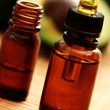Coptis formula
Coptis formula
Natural Standard Monograph, Copyright © 2013 (www.naturalstandard.com). Commercial distribution prohibited. This monograph is intended for informational purposes only, and should not be interpreted as specific medical advice. You should consult with a qualified healthcare provider before making decisions about therapies and/or health conditions.
Related Terms
Angelica (Bai Zhi), chrysanthemi (Ju Hua), cnidium (Chuan Qiong), coptis (Huang Lian), Da Huang (ruhbarb), forsythia (Lian Qiao), gardenia (Zhi Zi), gypsum (Shi Gao), Huang Lian Shang Qing Wan, inula (Xuan Fu Hua), ledebouriella (Fang Feng), licorice (Gan Cao), mint (Bo He), phellodendra (Huang Bai), platycodon (Jie Geng), schizonepeta (Jing Jie), scullcap (Huang Qin), viticis (Man Jing Zi).
Background
Coptis formula is a Chinese herbal formula, which was mainly used to reduce excess heat in body. The formula contains: coptis (Huang Lian), Da Huang (rhubarb), scullcap (Huang Qin), phellodendra (Huang Bai), gypsum (Shi Gao), gardenia (Zhi Zi), forsythia (Lian Qiao), chrysanthemi (Ju Hua), schizonepeta (Jing Jie), angelica (Bai Zhi), viticis (Man Jing Zi), cnidium (Chuan Qiong), Ledebouriella (Fang Feng), mint (Bo He), inula (Xuan Fu Hua), platycodon (Jie Geng), and licorice (Gan Cao).
Based on expert opinion, coptis formula is usually prescribed as a dose of 10-20 drops three times a day.
The main use of this formula is to dispel excess heat (in Chinese herbalogy, this means hyper-active function, not necessarily a feeling of heat). It is used to treat high fever, irritability, insomnia, nosebleed or vomiting of blood due to excess heat. Coptis formula may also be taken to promote the cleaning process of infection, especially candidiasis (yeast). Other common uses include treatment of heart palpitations, hypertension, deep-rooted boils, other swellings, dysenteric disorders or jaundice due to damp (excess internal body dampness) heat, and for treatment of diabetes with coadministration of glibenclamide.
Theory/Evidence
A double-blind study of more than 200 people evaluated the effectiveness of coptis formula (a traditional combination therapy) with or without the drug glibenclamide for the treatment of diabetes.Coptis formula appeared to significantly enhance the effectiveness of the drug; however, the herbs produced marginal benefits at best when taken alone.
Safety
The U.S. Food and Drug Administration does not strictly regulate herbs and supplements. There is no guarantee of strength, purity or safety of products, and effects may vary. You should always read product labels. If you have a medical condition, or are taking other drugs, herbs, or supplements, you should speak with a qualified healthcare provider before starting a new therapy. Consult a healthcare provider immediately if you experience side effects.
Experts recommend this formula only for those people with a strong constitution, as this formula can injure yin (bodily fluids).
Based on tradition, coptis formula is not recommended long term due to the drying nature of the formula.
Author Information
This information has been edited and peer-reviewed by contributors to the Natural Standard Research Collaboration (www.naturalstandard.com).
Bibliography
Natural Standard developed the above evidence-based information based on a thorough systematic review of the available scientific articles. For comprehensive information about alternative and complementary therapies on the professional level, go to www.naturalstandard.com. Selected references are listed below.
Chen, Q. M. and Xie, M. Z. Studies on the hypoglycemic effect of Coptis chinensis and berberine. Yao Xue.Xue.Bao. 1986;21(6):401-406. View Abstract
Han, Y. Remarks on Chinese materia medica (12)--Coptis root, a drug for clearing heat and drying wetness. Zhong.Yao Tong.Bao. 1983;8(4):44-46. View Abstract
Huang, Y. X. Treatment of osteomyelitis of the fingers by steeping in a Coptis decoction. Zhong.Xi.Yi.Jie.He.Za Zhi. 1985;5(10):604-5, 579. View Abstract
Kawamoto, M. and Mikage, M. Herbological studies of Coptidis rhizoma (Part 2): on the old Japanese name of Coptis japonica makino. Yakushigaku.Zasshi 1999;34(1):35-41. View Abstract
Vray M, Attali JR. Randomized study of glibenclamide versus traditional Chinese treatment in type 2 diabetic patients. Chinese-French Scientific Committee for the Study of Diabetes. Diabete Metab. 1995;21:433-439. View Abstract
Wu YH, Jiang GS, Zhagn SZ, Bian HZ, Zhu SP. The clinical study on the adjunctive effects of aqueous extract from coptis root for the treatment of chronic periodontitis. Shanghai Kou Qiang Yi Xue. 2004 Aug;13(4):252-5. View Abstract
Xu XW, Zhang DX. Effect of Tangyikang in improving the function of pancreatic islet beta cells in patients with latent autoimmune diabetes mellitus in adults. Zhongguo Zhong Xi Yi Jie He Za Zhi. 2008 Oct;28(10):882-5. View Abstract
Copyright © 2013 Natural Standard (www.naturalstandard.com)
The information in this monograph is intended for informational purposes only, and is meant to help users better understand health concerns. Information is based on review of scientific research data, historical practice patterns, and clinical experience. This information should not be interpreted as specific medical advice. Users should consult with a qualified healthcare provider for specific questions regarding therapies, diagnosis and/or health conditions, prior to making therapeutic decisions.
Updated:
March 22, 2017
